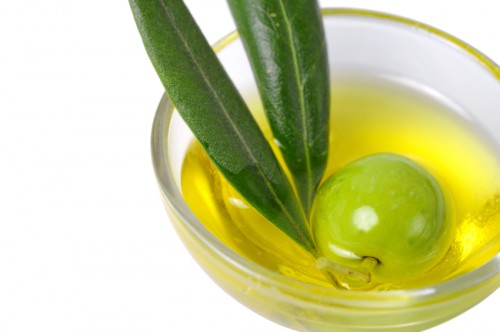The UC Davis Olive Center conducted a survey in 2012 with 2,234 US Consumers to examine their perceptions and attitudes toward olive oil. The survey results showed that consumers believed that they knew more about olive oil than they actually do.
Try to answer the questions below!

TRUE OR FALSE
Pure olive oil is actually a lower grade than extra virgin olive oil. It is a refined olive oil, which means it was produced by using solvents and high heat to neutralize the tastes of the oil.

TRUE OR FALSE
Bitterness is actually a characteristic of fresh olive oil. The level of bitterness depends on how ripe the olive is and is a good indicator of an extra virgin olive oil’s antioxidant and anti-inflammatory value.

TRUE OR FALSE
Color is actually an unreliable factor. Color is determined by the ripeness of the olives at harvest. Expert olive oil tasters use colored glasses to prevent color bias when tasting olive oils.
Extra virgin olive oil (EVOO) is the highest quality grade of olive oil.
According to international standards, it must meet a series of chemical requirements and be able to pass a expert panel test. To achieve these requirements, an oil must be made from healthy, expertly picked olives, and milled within twenty-four hours of the harvest.
There are two main ways of testing olive oil: chemical and sensory. They are complementary procedures; both are required for a full assessment of the quality of the olive oil.
The chemical analysis measure free fatty acid (FFA) and peroxide levels. FFA levels the quality of the fruit prior to milling, and peroxide levels indicate if the oil has been exposed to light or high ambient temperatures.
The sensory analysis is conducted by sensory panels of experts trained to recognize a series of positive and negative attributes. The panelists must indicate that it contains some fruity flavors and detect no defects for it to be considered extra virgin.
The standards associated with grading vary slightly from one organization to another, but most countries have standards that are similar to International Olive Council's.
Below are some positive and negative tasting attributes that panelists look for when conducting the sensory test.
Olives are fruit so a good olive oil needs to have some degree of fruitiness
Taste of oil obtained from unripe olives, perceived on the back of the tongue
A peppery sensation in the mouth and throat is a sign of fresh olive oil and signifies the presence of antioxidants
Smells or tastes like sweaty socks or swampy vegetation, defect caused by olives gathered in piles and undergone fermentation
Flavor of oil obtained from fruit in which fungi and yeast have developed
Flavor of oil reminiscent of wine or vinegar due to fermentation of the olives
Metal flavor from prolonged contact with raw iron during processing or oil storage
The most common defect, the oily flavor from eating old nuts or stale crackers
Negatives such as matty, brined, cooked, waste water, frozen, etc.
To meet the legal requirements for taste and chemical properties of the extra virgin grade, an oil must be made from healthy, expertly picked olives, milled within twenty-four hours of the harvest to preserve their flavors and avoid spoilage.
Hover over each step below to see more details on the olive oil production process.
Note that extra virgin and virgin oils are not refined - they are bottled directly after being pressed.
Is your favorite brand actually extra virgin olive oil? UC Davis researchers conducted chemical and sensory tests of popular EVOO brands across California to see which ones met standards for extra virgin olive oil.
They concluded 69 percent of imported olive oil samples and 10 percent of California olive oil samples labeled as extra virgin olive oil failed to meet the IOC/USDA sensory (organoleptic) standards for extra virgin olive oil.
The researchers at UC Davis also collected samples of several top-selling EVOO brands from supermarkets across California, 18 samples per brand. They tested all of the samples to see if they met the IOC standard for EVOO. The chart below compares how each brand did in their sensory testing and how much each brand costs in price per ounce.
How did your favorite brand do? Click the button to see the results and hover over the points to see brand details.
The US only produces 0.3 percent of the world's olive oil, but comparisons of US and imported EVOO reveal that domestic EVOO is generally cheaper and just as high-quality as imported oils. Consumers in California should consider taking advantage of their local producing region when purchasing EVOO.
So how do you purchase good EVOO? We've put together a list of things to look for the next time you visit the market.

Click here to download a cheat sheet to bring with you!